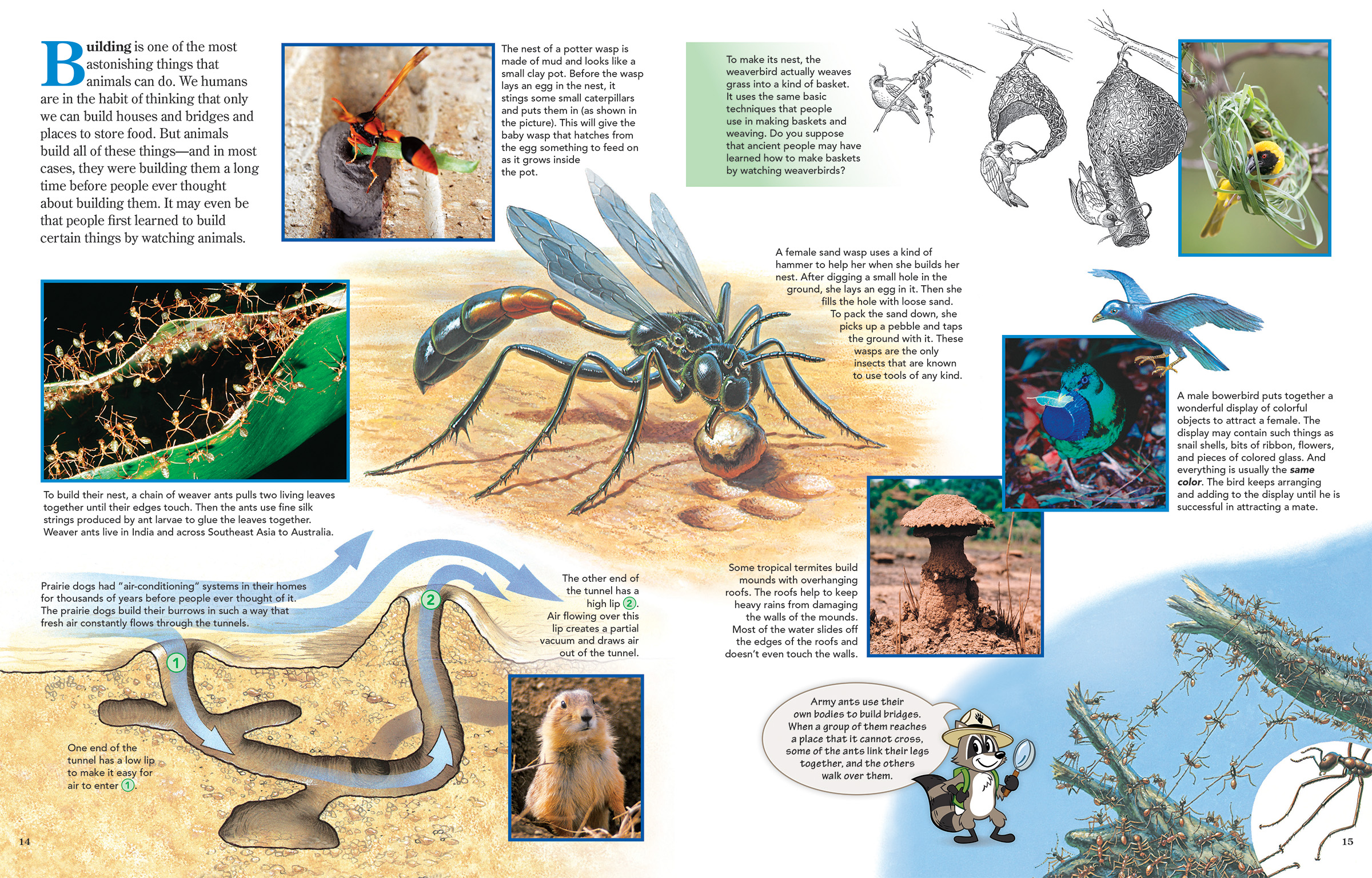
Animals That Build
ByBuilding is one of the most astonishing things that animals can do. We humans are in the habit of thinking that only we can build houses and bridges and places to store food. But animals build all of these things—and in most cases, they were building them a long time before people ever thought about building them. It may even be that people first learned to build certain things by watching animals.
The nest of a potter wasp is made of mud and looks like a small clay pot. Before the wasp lays an egg in the nest, it stings some small caterpillars and puts them in (as shown in the picture). This will give the baby wasp that hatches from the egg something to feed on as it grows inside the pot.
To build their nest, a chain of weaver ants pulls two living leaves together until their edges touch. Then the ants use fine silk strings produced by ant larvae to glue the leaves together. Weaver ants live in India and across Southeast Asia to Australia.
Prairie dogs had “air-conditioning” systems in their homes for thousands of years before people ever thought of it. The prairie dogs build their burrows in such a way that fresh air constantly flows through the tunnels.
One end of the tunnel has a low lip to make it easy for air to enter 1.
The other end of the tunnel has a high lip 2. Air flowing over this lip creates a partial vacuum and draws air out of the tunnel.
To make its nest, the weaverbird actually weaves grass into a kind of basket. It uses the same basic techniques that people use in making baskets and weaving. Do you suppose that ancient people may have learned how to make baskets by watching weaverbirds?
A female sand wasp uses a kind of hammer to help her when she builds her nest. After digging a small hole in the ground, she lays an egg in it. Then she fills the hole with loose sand. To pack the sand down, she picks up a pebble and taps the ground with it. These wasps are the only insects that are known to use tools of any kind.
A male bowerbird puts together a wonderful display of colorful objects to attract a female. The display may contain such things as snail shells, bits of ribbon, flowers, and pieces of colored glass. And everything is usually the same color. The bird keeps arranging and adding to the display until he is successful in attracting a mate.
Some tropical termites build mounds with overhanging roofs. The roofs help to keep heavy rains from damaging the walls of the mounds. Most of the water slides off the edges of the roofs and doesn’t even touch the walls.
Army ants use their own bodies to build bridges. When a group of them reaches a place that it cannot cross, some of the ants link their legs together, and the others walk over them.

